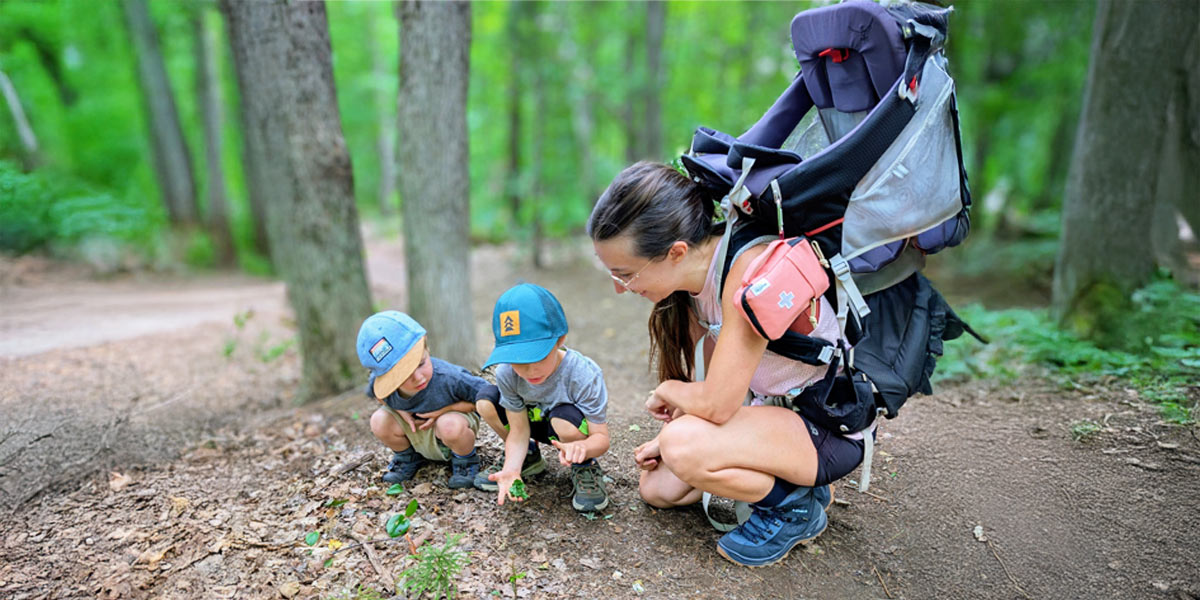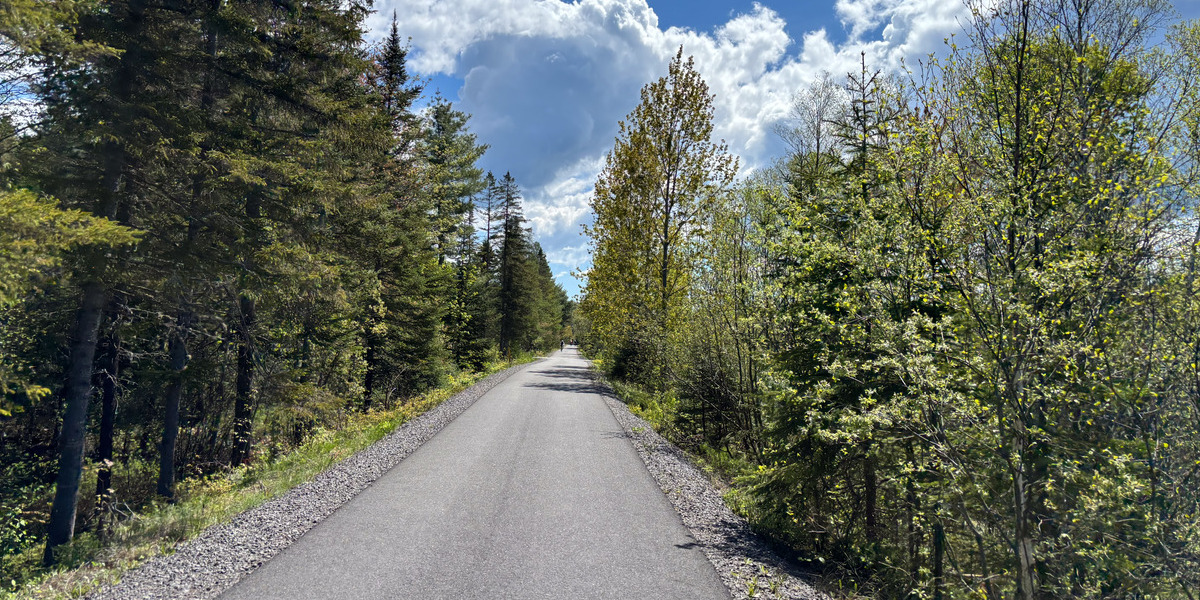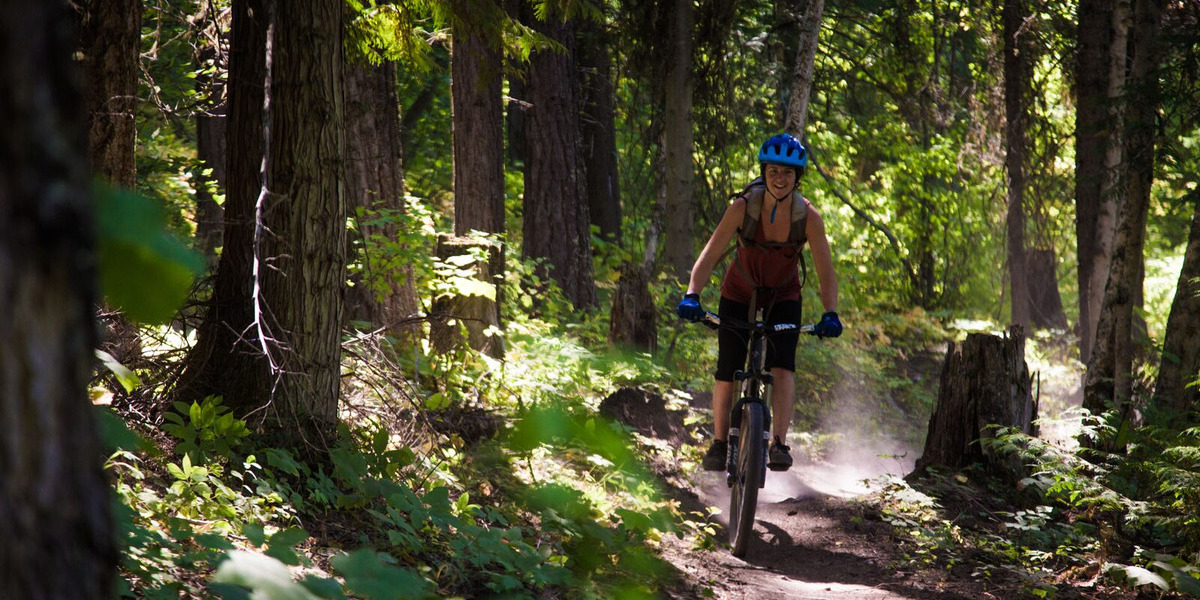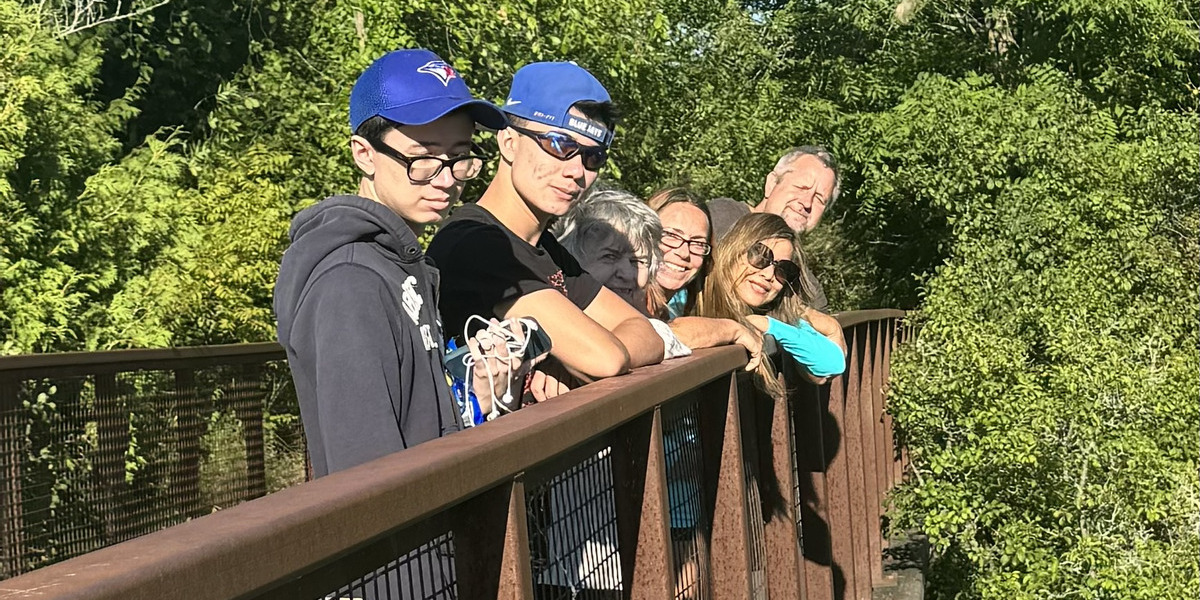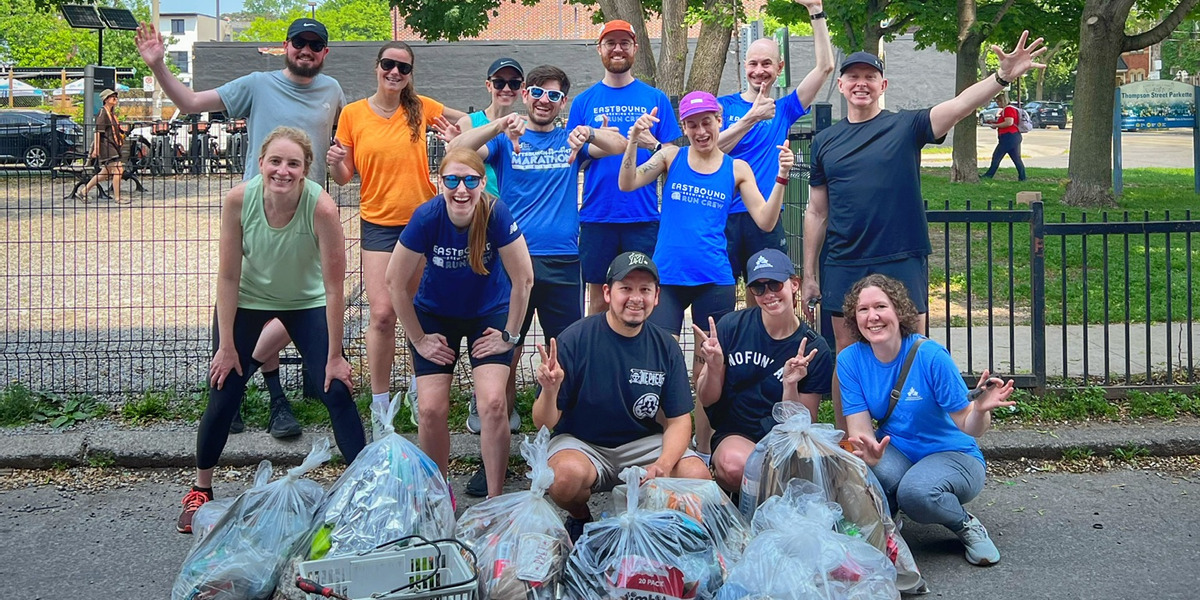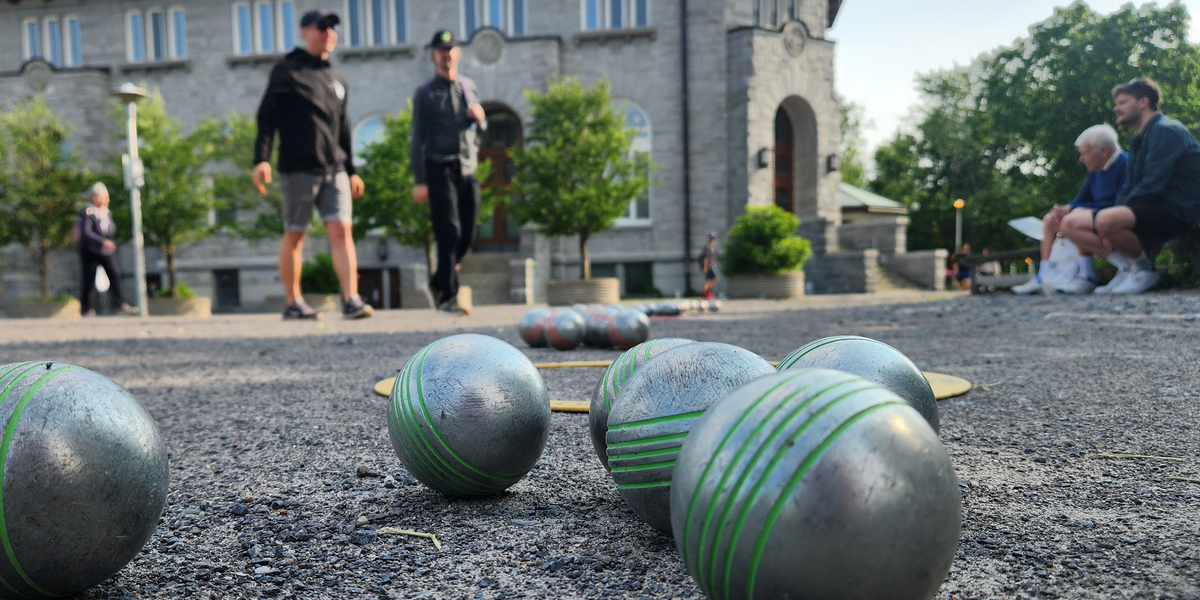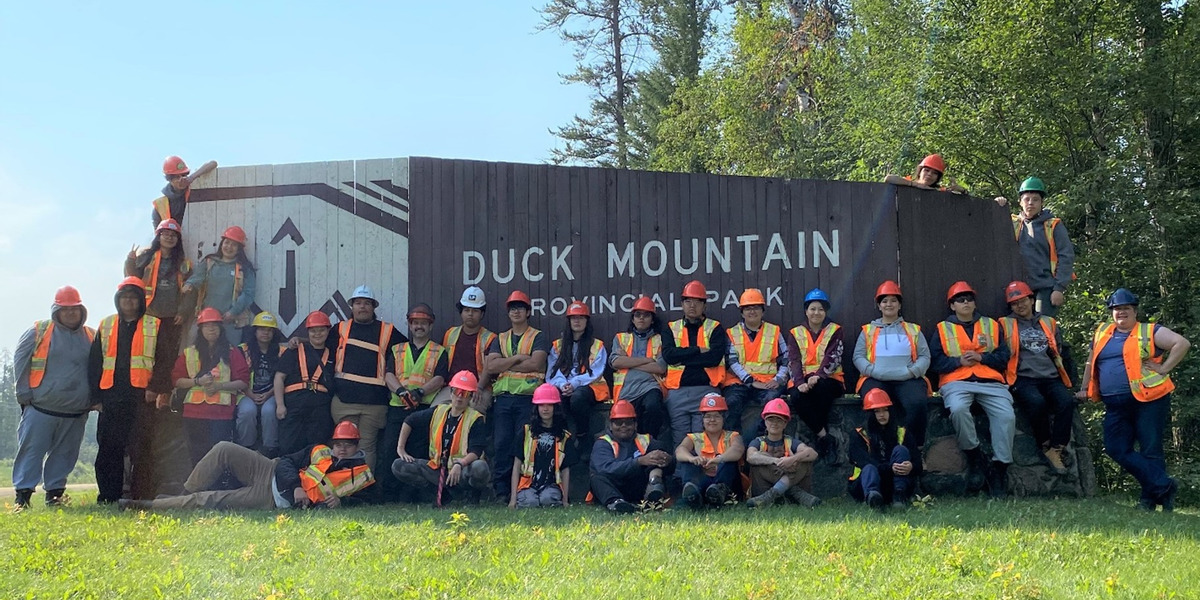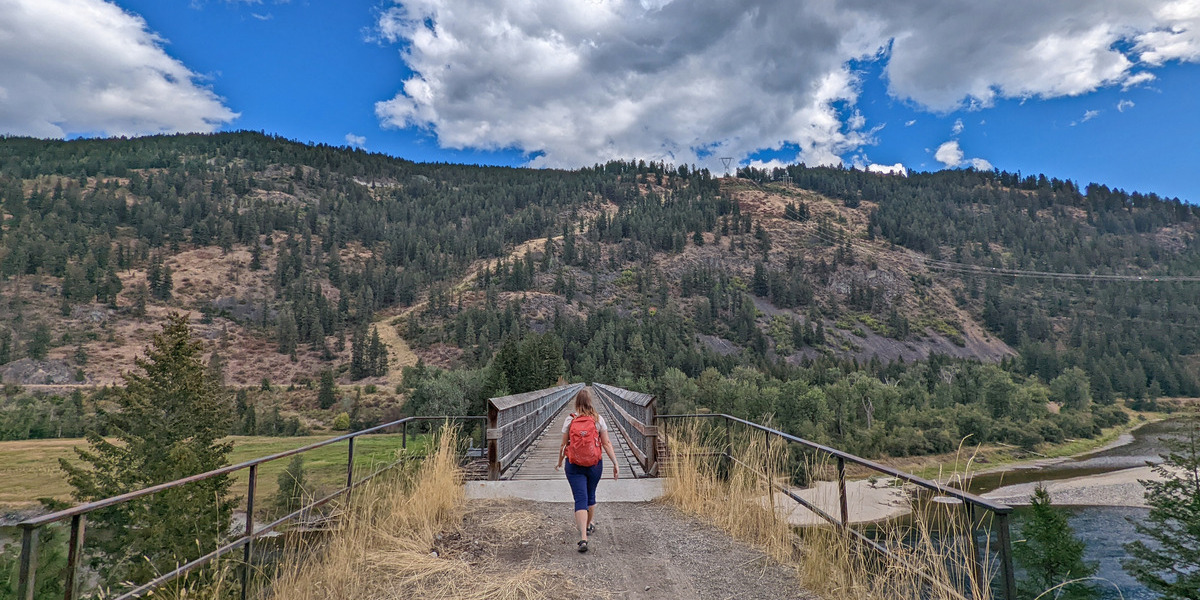Taryn’s Trans Canada Trail: Stay Safe on the Trails This Wildfire Season
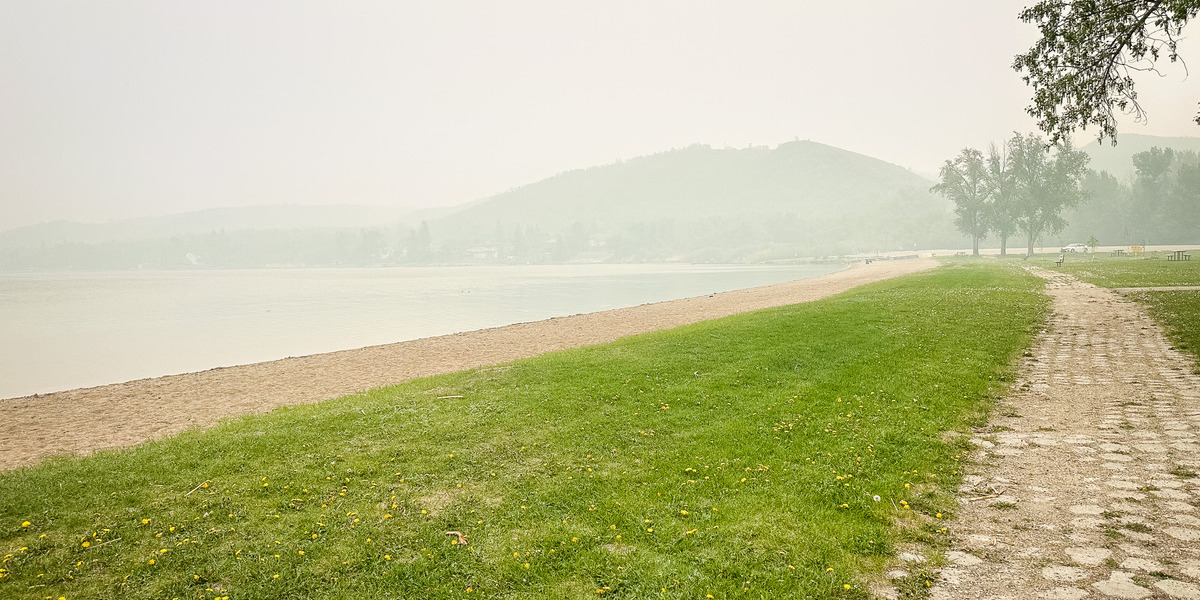
Written by Taryn Eyton
Unfortunately, wildfires are now a reality during Canadian summers. Wildfires and smoke conditions can change quickly, so it’s essential to know where to find up-to-date info to stay safe. With a little preparation and a flexible mindset, it’s possible to still enjoy those summer hikes and bike rides that we all love.
Know Before You Go
In wildfire season, it’s important to do some research before you hit the trails. Each province and territory has a wildfire website with info on fire bans, active fires and closed areas. Refer to the resources section at the end of this post for a full list.
You can also check official park and trail websites or social media channels to see if the area you want to hike or ride is affected by fires. I recommend that you do not rely on All Trails or Google Maps. They use crowd-sourced info that can be outdated.
It’s also important to check the weather forecast. According to the Canadian National Fire Database, lightning causes about 50% of wildfires in Canada. If you see a high chance of thunderstorms in the forecast, it’s not safe to set out on the trails. Hot and dry weather with high winds can also accelerate fire spread. Use caution when that’s forecasted.
Breathing in wildfire smoke is bad for your health. It can irritate your respiratory system and make it harder for your lungs to get oxygen into your blood. Keep in mind that the health risks of wildfire smoke are higher for children, older adults, pregnant women and people with chronic health conditions. The more vigorously you exercise, the deeper you breathe, and therefore, the more smoke you inhale.
Smoke blowing in from fires hundreds or even thousands of kilometres away can affect your hike or bike ride. Check the Canada Air Quality Health Index to see if outdoor exercise is recommended. You can also use the smoke forecasts from FireSmoke Canada to predict whether smoke will affect your local trails in the coming hours and days.
Have a flexible mindset when choosing a destination and a day to go. If fire and smoke conditions aren’t right, you might need to switch to your backup plan or postpone your trip.
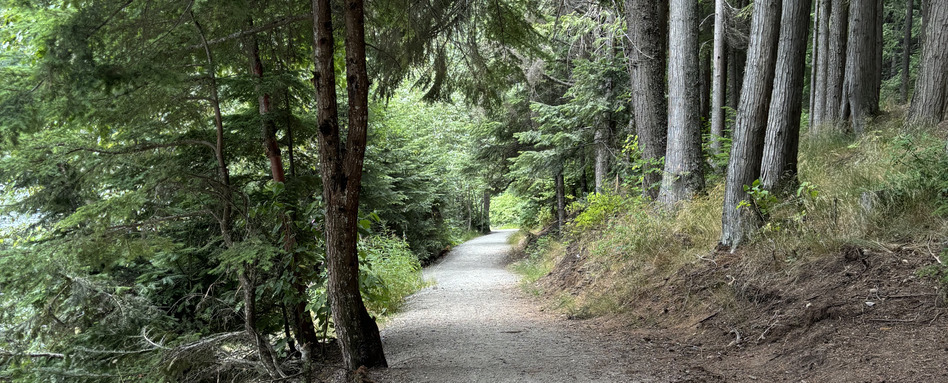
Photo credit: Amy Schwartz
Plan Ahead (Just in Case)
Once you’ve checked that the trails are open and there isn’t going to be significant smoke, it’s time to make a plan for your hike or bike ride.
Pack the 10 essentials. These are key pieces of gear that you’ll need in an emergency. While you should always bring them, they are especially important during wildfire season when conditions can change quickly.
Bring a fully charged cell phone and a backup battery pack. You might need to call for help or to get updates on conditions. If you’re going to an area without cell service, consider investing in a satellite messenger.
It’s also a good idea to tuck a few N95 masks into your backpack. They weigh just a few grams and can come in handy if the air quality gets bad. If you don’t have a mask, you can cover your mouth and nose with a bandana or buff instead.
Make sure you leave a trip plan with a friend or family member. That way, if you don’t return home on schedule, Search and Rescue will know where to look for you. During wildfire season, your emergency contact can also keep you up to date with the latest info on nearby wildfires and smoke.
Read up on what to do if you see a wildfire while you’re on the trail. You can’t outrun fires, so it’s important to know what to do and how to shelter in place. The Pacific Crest Trail Association has a good primer on how to react to wildfires.
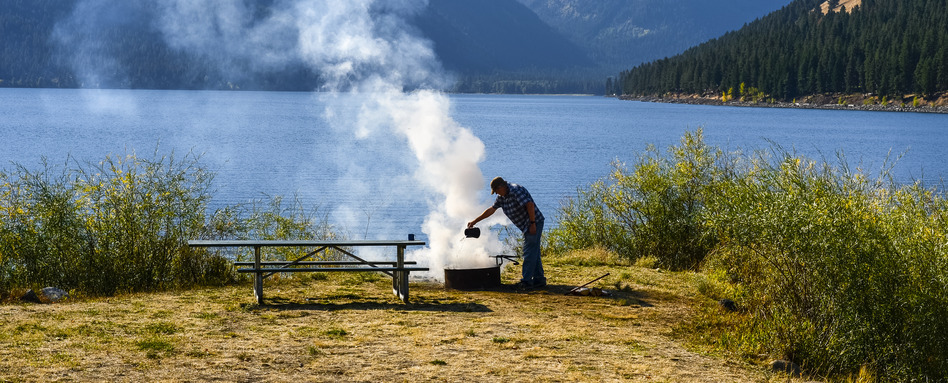
Do Your Part for Wildfire Prevention
Unfortunately, humans cause many wildfires in Canada. Check provincial and territorial websites to see if campfires are allowed. You should also check park and local municipality websites since some parks and towns have stricter rules about fires than the province or territory. Using a propane fire pit or gathering around a lantern can be a great alternative to a campfire.
If you do choose to have a campfire, keep it small. Check the forecast and skip the campfire if it is windy. Build your fire inside a metal fire ring to keep it from spreading. Fires built on bare ground can ignite root systems and spread to the surrounding trees and bushes. When you’re done, make sure your fire is out by dousing it with water and stirring the ashes until it is cool to the touch. If there isn’t a reliable water source nearby, don’t make a fire — you won’t be able to put it out quickly.
Cigarette butts can also cause wildfires, especially in dry and windy weather. Smokers should be careful while smoking and dispose of their butts safely. You can buy fireproof pocket ashtrays to carry your cigarette butts on the trail, or repurpose a small metal tin like the ones that Altoids mints come in.
Vehicles can also cause wildfires. Avoid driving vehicles, especially ATVs, in dry grass. The hot exhaust pipes and mufflers can start fires. Ensure that your vehicle is properly maintained to avoid dragging parts or chains, which can throw sparks.
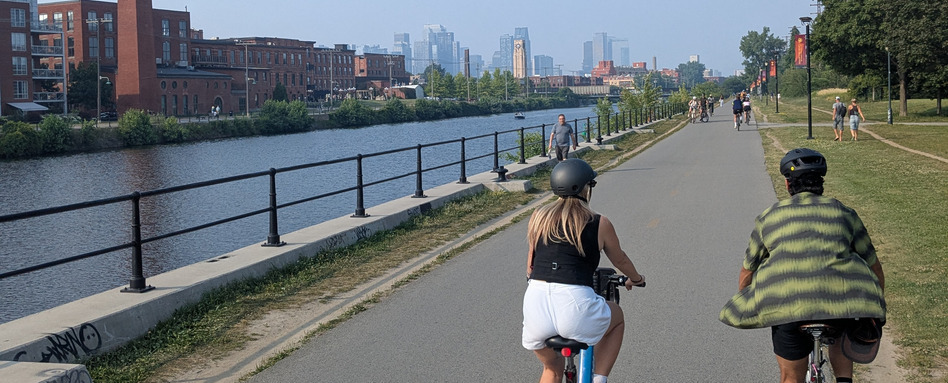
Photo credit: Matt Ainsley
Wildfire Safety Resources in Canada
National Resources
• National Wildland Fire Situation Report
• Canadian Wildland Fire Information System
• Canada Air Quality Health Index
Provincial and Territorial Resources
• British Columbia Wildfire Service
• Newfoundland and Labrador Forest Fire Season
• Northwest Territories Wildfire Update
• Prince Edward Island Wildfire
• Québec Société de protection des forêts contre le feu
• Saskatchewan Emergencies and Response

Photo credit: Amy Schwartz
Taryn Eyton is a Squamish-based writer and the founder of the outdoor adventure website, HappiestOutdoors.ca. She is also the author of two hiking guidebooks: Backpacking in Southwestern British Columbia: The Essential Guide to Overnight Hiking Trails (Greystone Books, 2021) and Backpacking on Vancouver Island: The Essential Guide to the Best Multi-Day Trips and Day Hikes (Greystone Books, 2024). Taryn is a Leave No Trace Master Educator, the President of the Friends of Garibaldi Park Society, a member of the Board of Directors of the Vancouver International Mountain Film Festival, and a Fellow of the Canadian Geographic Society.
Follow her on Instagram at @happiestoutdoors or Facebook at https://www.facebook.com/happiestoutdoors.
Main photo credit: Jennifer Mahon


